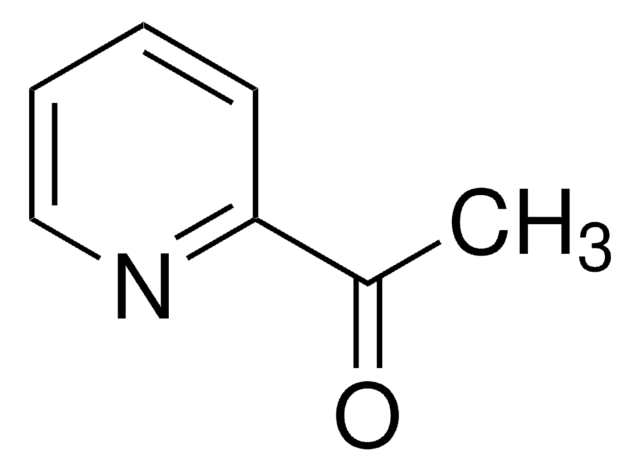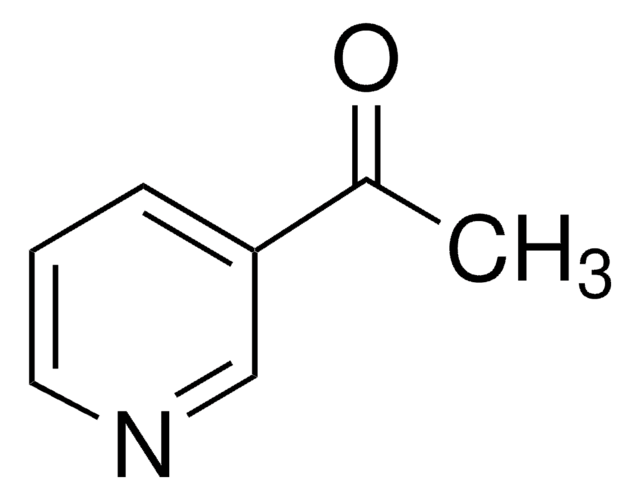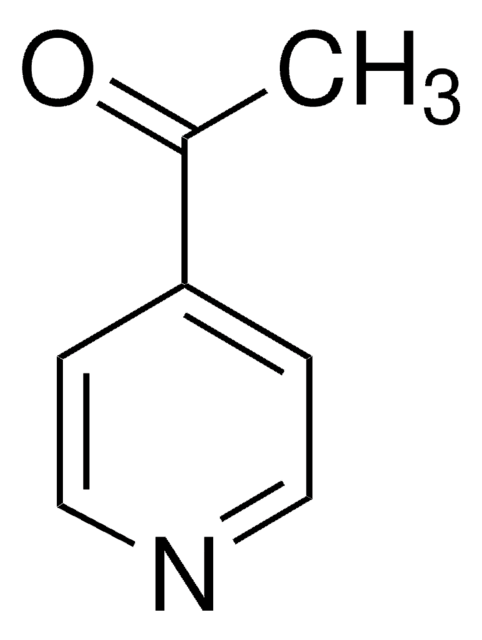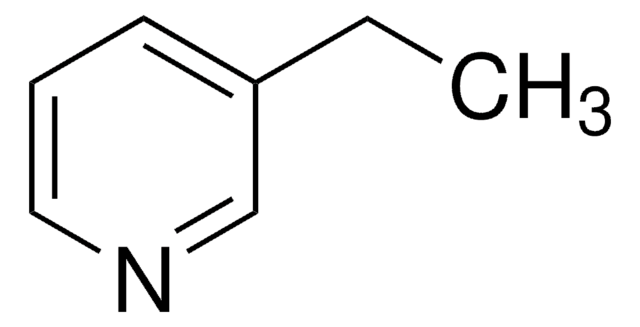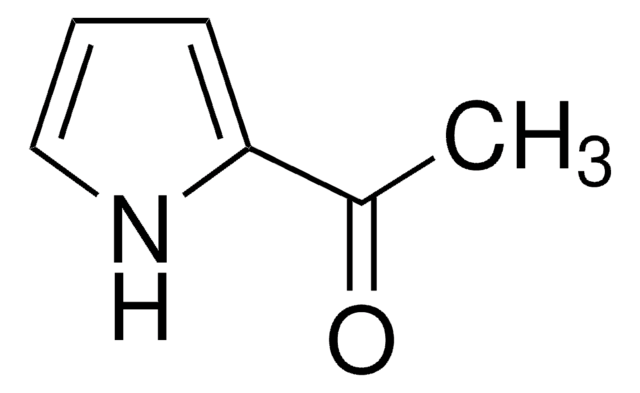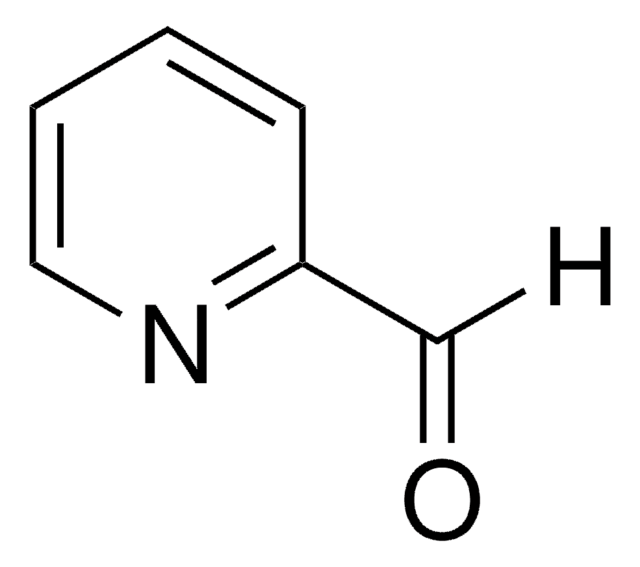W342408
3-Acetylpyridin
≥98%, FG
Synonym(e):
Methyl-3-pyridylketon
About This Item
Empfohlene Produkte
Biologische Quelle
synthetic
Qualitätsniveau
Qualität
FG
Fragrance grade
Halal
Kosher
Agentur
follows IFRA guidelines
meets purity specifications of JECFA
Einhaltung gesetzlicher Vorschriften
EU Regulation 1223/2009
EU Regulation 1334/2008 & 178/2002
Assay
≥98%
Verunreinigungen
≤0.5% Water (Karl Fischer)
Brechungsindex
n20/D 1.534 (lit.)
bp
220 °C (lit.)
mp (Schmelzpunkt)
11-13 °C (lit.)
Dichte
1.102 g/mL at 25 °C (lit.)
Anwendung(en)
flavors and fragrances
Dokumentation
see Safety & Documentation for available documents
Nahrungsmittelallergen
no known allergens
Allergener Duftstoff
no known allergens
Organoleptisch
nutty; sweet
SMILES String
CC(=O)c1cccnc1
InChI
1S/C7H7NO/c1-6(9)7-3-2-4-8-5-7/h2-5H,1H3
InChIKey
WEGYGNROSJDEIW-UHFFFAOYSA-N
Suchen Sie nach ähnlichen Produkten? Aufrufen Leitfaden zum Produktvergleich
Verwandte Kategorien
Anwendung
- Identification of antioxidant and flavour marker compounds in Kalosi-Enrekang Arabica brewed coffee processed using different postharvest treatment methods.: This study explores the impact of various postharvest processes on the antioxidant properties and flavor profile of Kalosi-Enrekang Arabica coffee, with a focus on 3-acetylpyridine as a key flavor marker. The research aims to enhance coffee quality and consumer satisfaction through optimized processing techniques (Yulianti et al., 2024).
Signalwort
Danger
H-Sätze
Gefahreneinstufungen
Acute Tox. 3 Oral - Skin Irrit. 2
Lagerklassenschlüssel
6.1C - Combustible acute toxic Cat.3 / toxic compounds or compounds which causing chronic effects
WGK
WGK 1
Flammpunkt (°F)
219.2 °F - closed cup
Flammpunkt (°C)
104 °C - closed cup
Persönliche Schutzausrüstung
Eyeshields, Faceshields, Gloves, type ABEK (EN14387) respirator filter
Hier finden Sie alle aktuellen Versionen:
Besitzen Sie dieses Produkt bereits?
In der Dokumentenbibliothek finden Sie die Dokumentation zu den Produkten, die Sie kürzlich erworben haben.
Kunden haben sich ebenfalls angesehen
Unser Team von Wissenschaftlern verfügt über Erfahrung in allen Forschungsbereichen einschließlich Life Science, Materialwissenschaften, chemischer Synthese, Chromatographie, Analytik und vielen mehr..
Setzen Sie sich mit dem technischen Dienst in Verbindung.